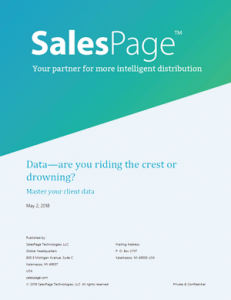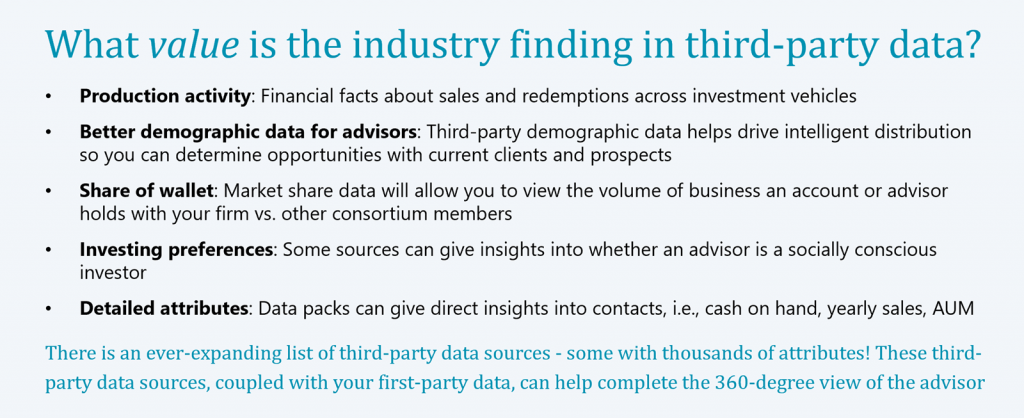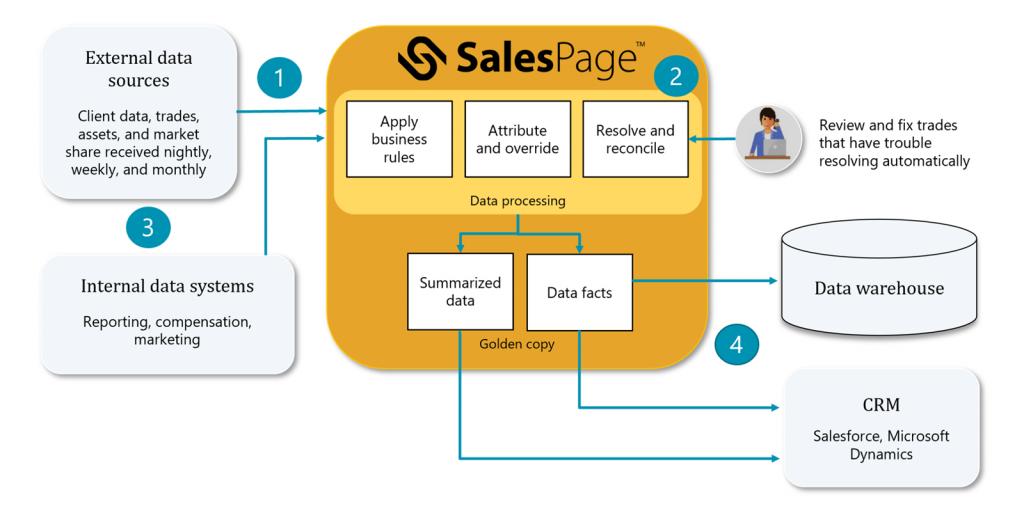Since 2018, a new acronym has gained popularity: CDP (Customer Data Platform). Alternatively, SalesPage frequently talks about a distribution data platform. This begs the question—what is a CDP, and how does it differ from what we refer to as a distribution data platform?
Customer data platform (CDP) breakdown
CDPs are helpful with data curation and sharing, but what about data activation? Not so much. Let’s break down what a CDP really is and what it does.
According to the CDP Institute, a vendor-neutral industry group, a Customer Data Platform is software that creates a unified customer database with data pulled from multiple sources. These sources include a variety of first-party data from your website (via first-party cookies), marketing system, CRM, and more. A CDP brings this data together to build a complete profile for your customer and makes that data shareable with your downstream systems.
CDPs help brands stay connected to consumers and, according to an article in AdAge by George P. Selfo, CDP use will continue to rise with privacy regulation tightening. The CDP Institute recorded CDPs doubling from 57 at the start of 2018 to 101 by the end of 2019. Well-known tech firms including Oracle, Adobe, and Microsoft all launched CDPs in 2019. The key commonality between all these CDPs is that they organize and centralize first-party data. However, they do not activate data. They only send it to other systems within your company.
What is a distribution data platform?
In response to industry trends, SalesPage solutions are constantly evolving. I’ve had the pleasure of witnessing a transformation in both technology and in the industry. With the pace of change accelerating and the introduction of a wide variety of acronyms, like CDP, it has been a fun challenge to stay ahead of the curve—communicating the problems we solve and the benefits we deliver to our audience. In fact, SalesPage was one of the first firms to use the acronym CDP. However, we defined this differently as a client data platform for asset managers. We’ve elaborated on the capabilities of our platform through a white paper series kicked off in May of 2018 and wrapped up in June of the following year.
 Learn more about SalesPage’s distribution data white paper series
Learn more about SalesPage’s distribution data white paper series
- Data—are you riding the crest or drowning?
- Navigate the tide: Master the flow of your client data
- SalesPage and Salesforce – Forging the missing link in the asset management data chain
Since the introduction of that series, many of the 101 new Customer Data Platforms were introduced and we’ve learned two important lessons. One, the world doesn’t need more acronyms (so we will try to lead the effort not to use acronyms going forward). Two, we need to better define how SalesPage’s distribution data platform differs from the new CDPs.
Key differentiator: Data activation
The key difference between a CDP and a distribution data platform, like SalesPage, is that we help clients activate their data. How? In addition to the traditional CDP capabilities, SalesPage includes business capabilities that allow you to activate your data:
1) Unifies all types of data, including first and third-party data

2) Uses industry specific logic, technology and workflow
3) Allows data flexibility and scalability in the enterprise – whether it’s incorporating a new data source or system
4) Distributes data to the systems you need, so you can easily generate actionable insights

So, what is the best approach to manage and activate data? Think outside the CDP box! Consider your whole distribution—first and third-party data, business processes (territory and channel management), trade and asset management, compensation and reporting requirements, existing systems and services, and more. Choose a platform that will grow with you: a distribution data platform. Contact us to learn more about our distribution data platform or to discuss how we can help you activate your data.